HIGHLIGHTS
* OPPO Find X6 Pro is the company’s latest flagship smartphone.
* It has been awarded the best camera phone by DXOMARK.
* The smartphone features three 50MP rear cameras and a 32MP front camera.
Camera benchmarking platform DXOMARK has revealed the results for the optics test of the OPPO Find X6 Pro, which makes it the best camera phone in the world as per their test. OPPO launched the Find X6 Pro along with the Find X6 last month in China.
The smartphones are part of the Chinese company’s flagship series and come with top-end specifications and features.
According to DXOMARK, the OPPO Find X6 Pro received a total camera score of 153 points, making it the best camera phone on the platform. It even beat the likes of Apple iPhone14 Pro Max and Google Pixel 7 Pro to take the first spot.
OPPO Find X6 Pro Specifications
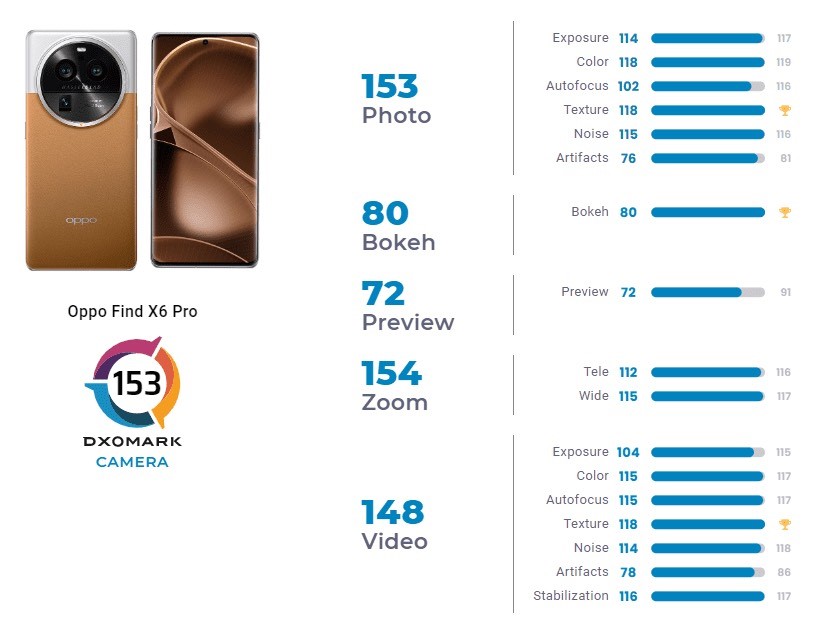
Before we delve into the results of each test, let’s take a look at the camera specifications.
The OPPO Find X6 Pro with Hassellad cameras features a 50MP primary sensor with OIS, a 50MP ultra-wide-angle lens, and a 50MP telephoto lens. Up front, there’s a 32MP camera for selfies.
As for the rest of the hardware, the OPPO Find X6 Pro features a 6.82-inch AMOLED 120Hz display, the Snapdragon 8 Gen2 chipset, and a 5,000mAh battery with 100W fast charging support.
OPPO Find X6 Pro Camera Test
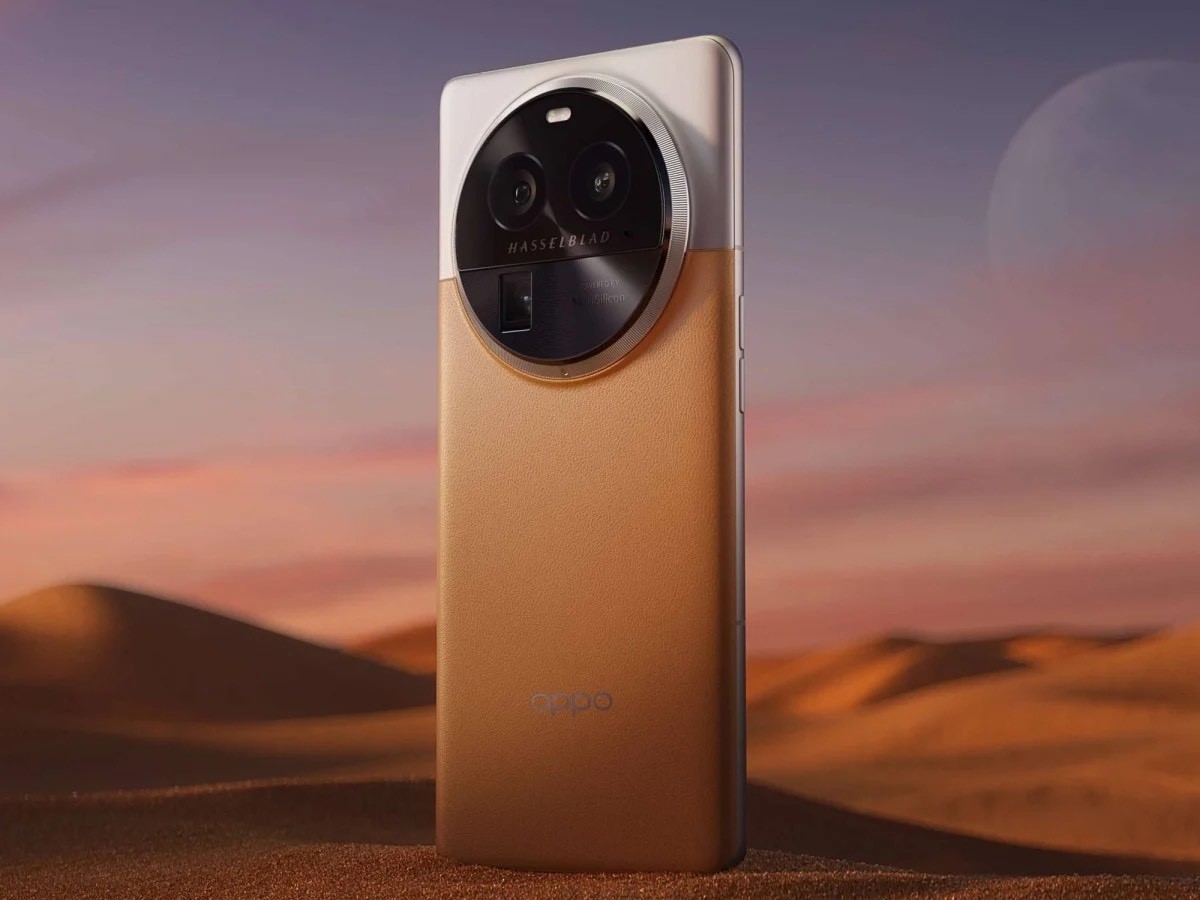
Coming to the camera test, DXOMARK said it took photos and videos in different environments such as outdoors, lowlight, and indoors along with portraits of people. Overall, the phone is recommended for capturing landscapes and portraits as it manages to grab a lot of natural light in all lighting conditions.
The OPPO Find X6 Pro‘s large image sensors are also said to prove beneficial for “excellent texture and noise results in photo, zoom, bokeh, and video”.
Lowlight photography is usually the toughest when it comes to smartphone cameras but the OPPO Find X6 Pro gave a good performance. The photos had a lot of image information and detail, and the colour rendering was also well managed, according to the results.
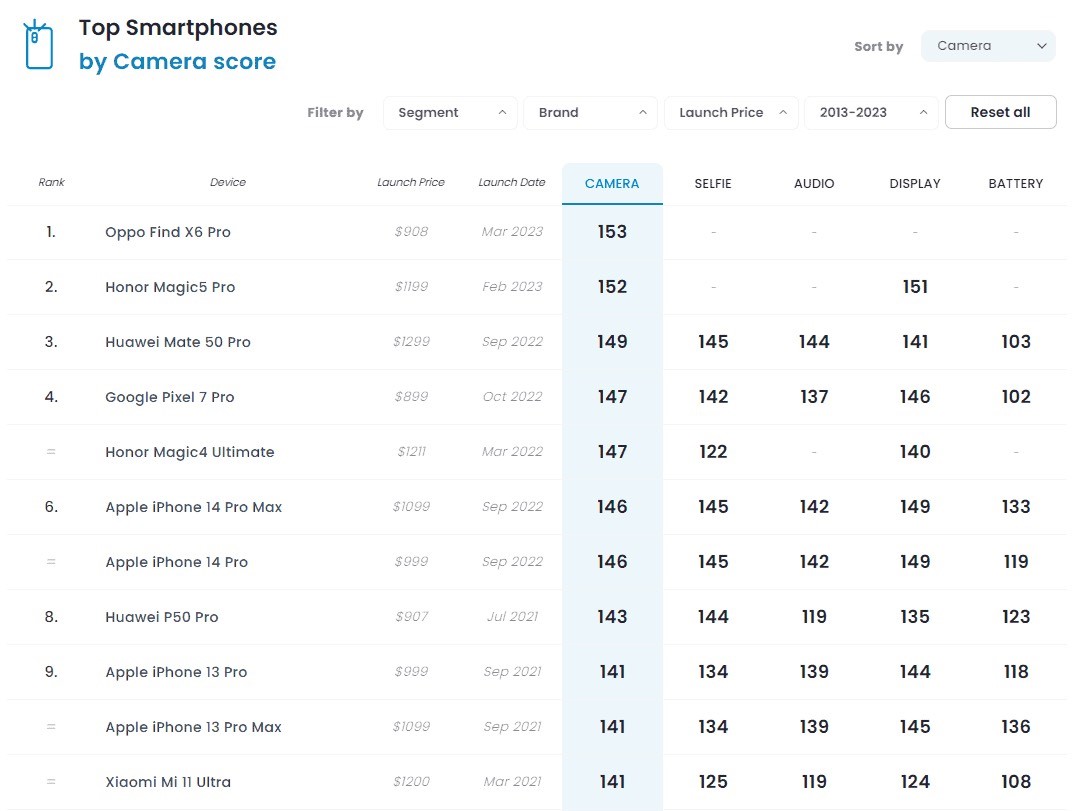
The smartphone’s night mode also proved to be better than its competitors as it captured better detail on faces.
When it comes to videography, the OPPO Find X6 Pro was compared to the top dog Apple iPhone 14 Pro.
Although it didn’t beat the iPhone, it still produced impressive results especially in low-light conditions.
The OPPO Find X6 Pro can shoot up to 4K videos at 60fps, and it uses an SDR-8-bit video format.
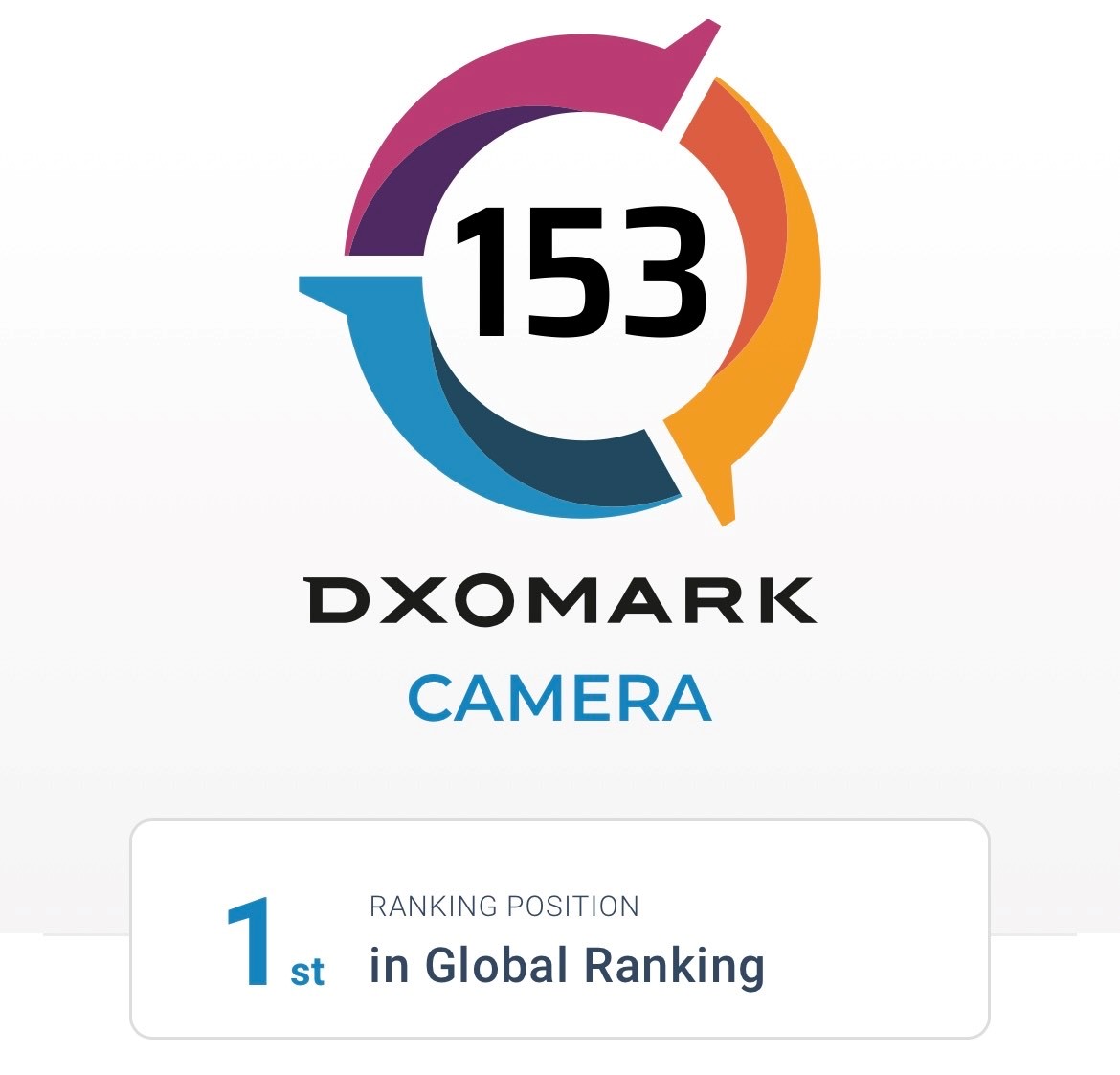
Portraits are also an important factor for smartphone cameras and in this category, the OPPO Find X6 Pro scored 144. As explained by DXOMARK, the photos captured excellent sharpness in portrait scenes, good bokeh rendering, and accurate focus even in low light conditions.
Although a top scorer, the OPPO Find X6 Pro also has some negatives to its cameras. These include lack of contrast in backlit portrait photos, exposure instabilities, shallow depth of field, unnatural skin tones, and dynamic range differences between capture and preview image.
Key Camera Specifications
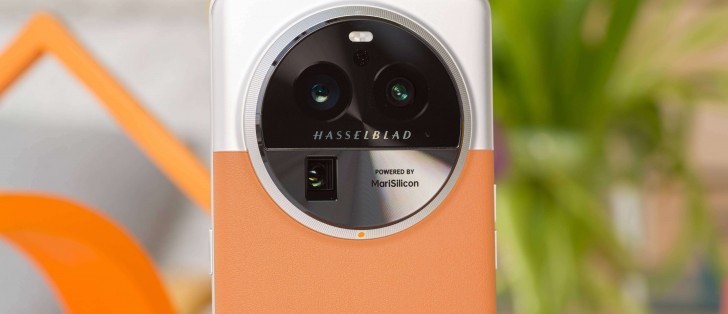
* Primary: 50MP 1″sensor, 23mm equivalent f/1.8 aperture lens, OIS
* Ultra-wide: 50MP 1/1.56″sensor, 15mm equivalent f/2.2 aperture lens
* Tele: 50MP 1/1.56″ sensor, 65mm equivalent f/2.6 aperture lens
* Video: up to 4K resolution at 60fps (4K/30fps tested)
Pros
* Excellent detail in photo, zoom and video, even in low light
* Image noise well under control in all conditions
* Reliable and fast autofocus in photo and video
* Nice bokeh effect with good subject detail
* Effective video stabilization
Cons
* Lack of contrast in backlit portrait photos
* Some exposure instabilities in photo and video
* Shallow depth of field means group shots need to be taken from afar to have everybody in focus
* Unnatural skin tones in some conditions
* Dynamic range differences between capture and preview image
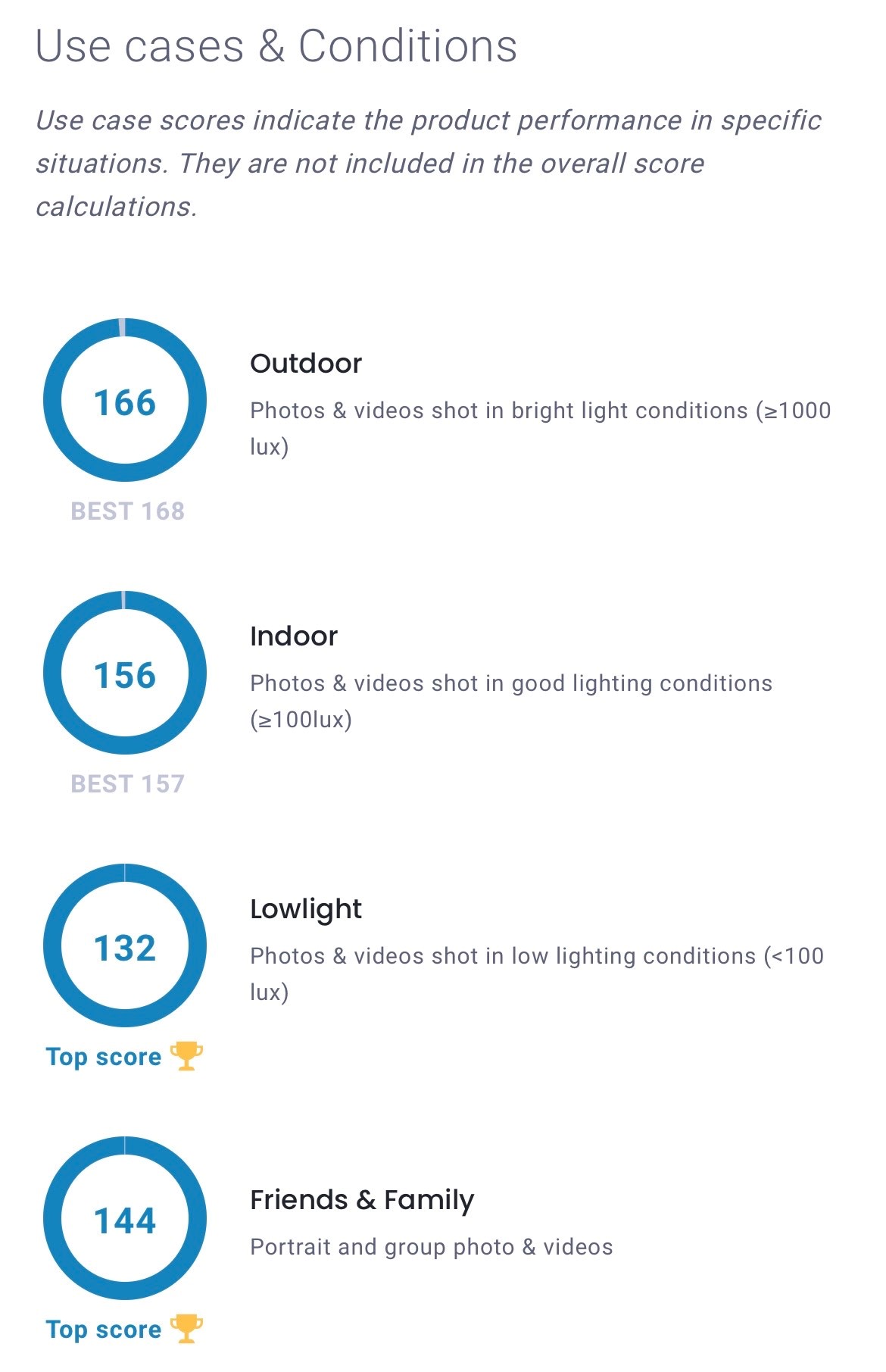
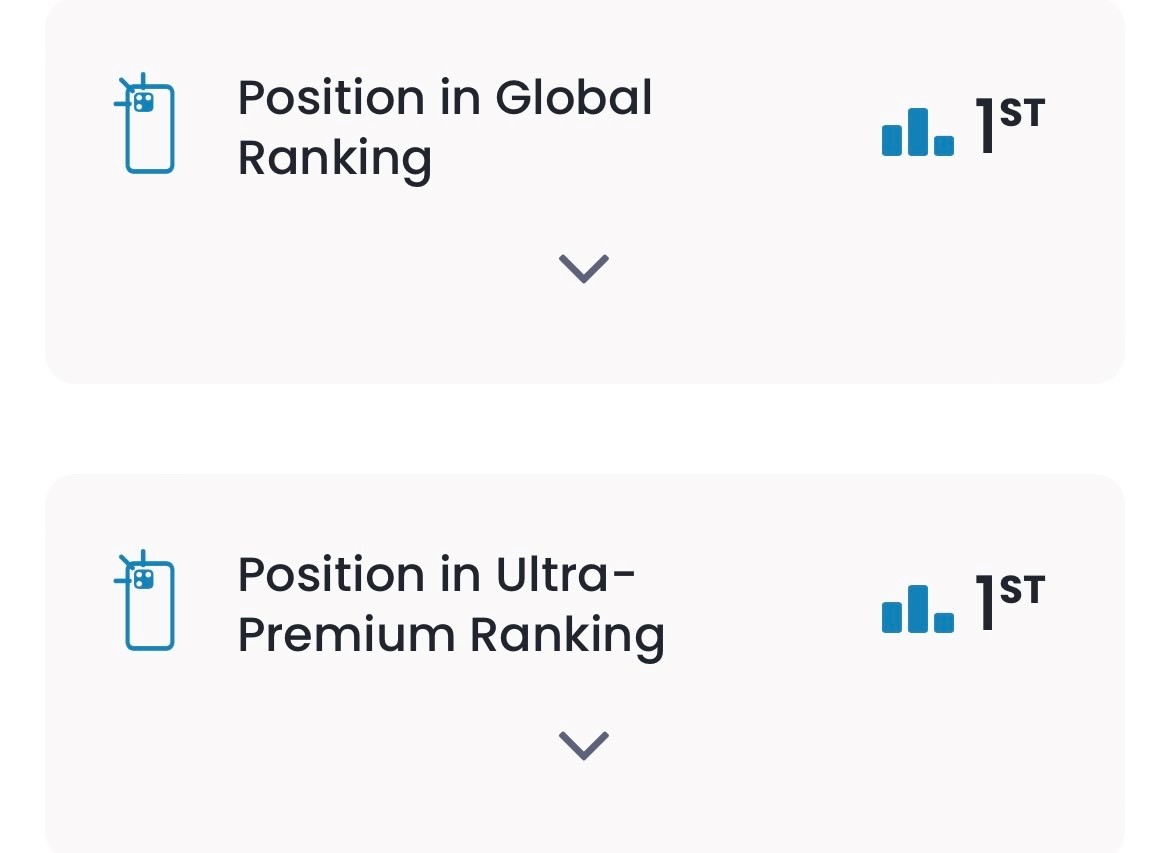
Oppo Find X6 Pro Camera Test
Comparison with Competitors

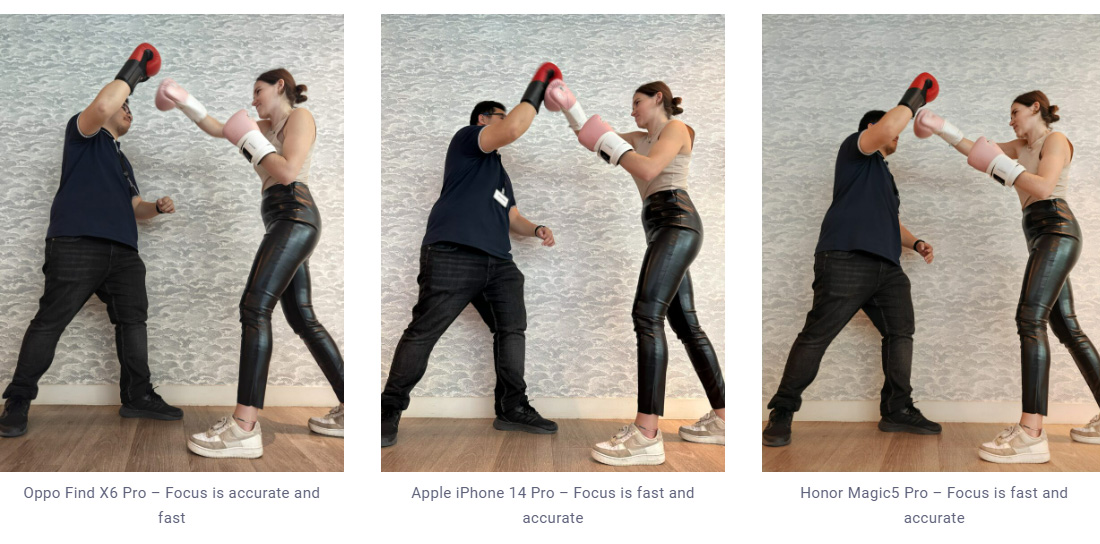

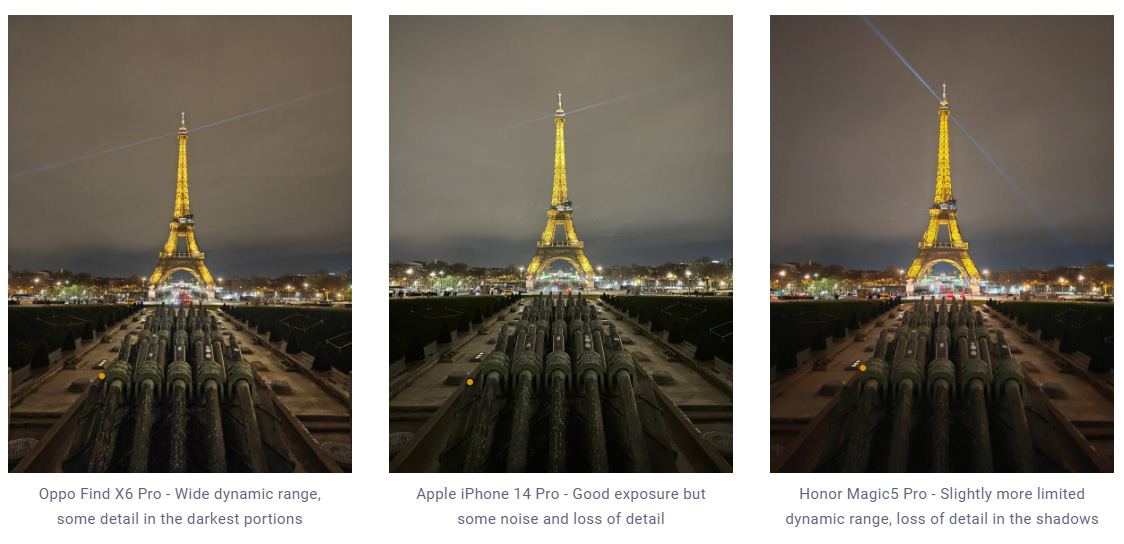
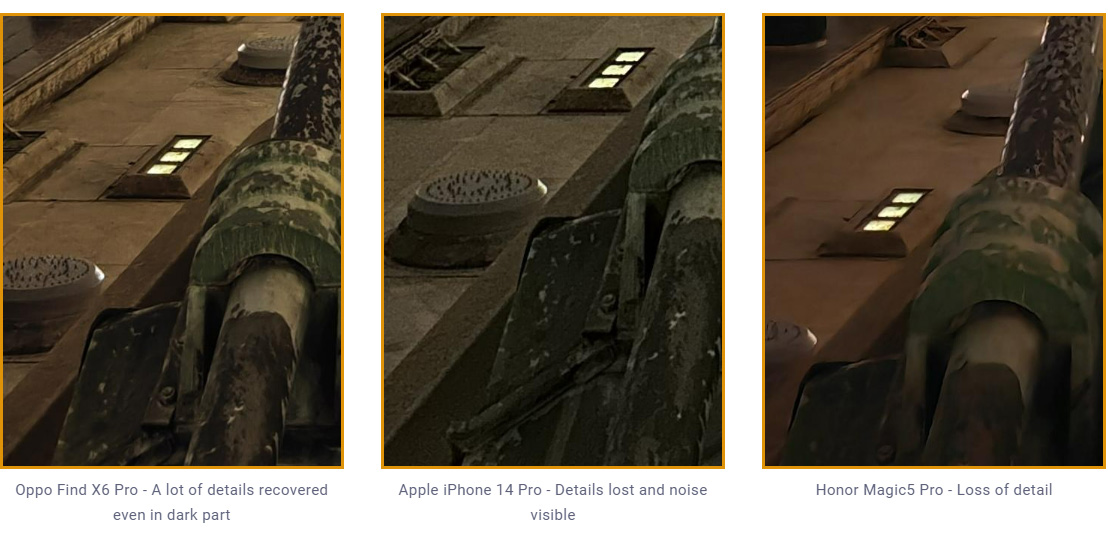
OPPO FIND X6 PRO SPECIFICATIONS
Key Specs
| RAM | 12 GB |
| Processor | Qualcomm Snapdragon 8 Gen 2 |
| Rear Camera | 50 MP + 50 MP + 50 MP |
| Front Camera | 32 MP |
| Battery | 5000 mAh |
| Display | 6.82 inches (17.32 cm) |
General
| Launch Date | July 12, 2023 (Expected) |
| Operating System | Android v13 |
| Custom UI | ColorOS |
Performance
| Chipset | Qualcomm Snapdragon 8 Gen 2 |
| CPU | Octa core (3.2 GHz, Single core, Cortex X3 + 2.8 GHz, Quad core, Cortex A715 + 2 GHz, Tri core, Cortex A510) |
| Architecture | 64 bit |
| Fabrication | 4 nm |
| Graphics | Adreno 740 |
| RAM | 12 GB
Best in Class
|
| RAM Type | LPDDR5X |
Display
| Display Type | AMOLED |
| Screen Size | 6.82 inches (17.32 cm) |
| Resolution | 1440 x 3168 pixels |
| Pixel Density | 510 ppi
Best in Class
|
| Screen to Body Ratio (calculated) | 89.42 % |
| Screen Protection | Corning Gorilla Glass, Glass Victus 2 |
| Bezel-less display | Yes with punch-hole display |
| Touch Screen | Yes, Capacitive Touchscreen, Multi-touch |
| Brightness | 2500 nits |
| HDR 10 / HDR+ support | Yes, HDR 10+ |
| Refresh Rate | 120 Hz |
Design
| Height | 164.8 mm Compare Size |
| Width | 76.2 mm |
| Thickness | 9.1 mm
Good
|
| Weight | 216 grams
Poor
|
| Colours | Cloud Black, Feiquan Green, Desert Silver Moon |
| Waterproof | Yes, Water resistant (up to 30 minutes in a depth of 1.5 meter), IP68 |
| Ruggedness | Dust proof |
Camera
| MAIN CAMERA | ||
| Camera Setup | Triple | |
| Resolution | 50 MP f/1.8, Wide Angle, Primary Camera(23 mm focal length, 1″ sensor size)50 MP f/2.2, Ultra-Wide Angle Camera(15 mm focal length, 1.56″ sensor size, 1µm pixel size)50 MP f/2.6, Periscope Camera(65 mm focal length, 1µm pixel size) | |
| Sensor | Exmor-RS CMOS Sensor | |
| Autofocus | Yes, Phase Detection autofocus, Laser autofocus | |
| OIS | Yes | |
| Flash | Yes, LED Flash | |
| Image Resolution | 8150 x 6150 Pixels | |
| Settings | Exposure compensation, ISO control | |
| Shooting Modes | Continuous Shooting High Dynamic Range mode (HDR) |
|
| Camera Features | Digital Zoom Auto Flash Face detection Touch to focus |
|
| Video Recording | 3840×2160 @ 30 fps 1920×1080 @ 30 fps |
|
| FRONT CAMERA | ||
| Camera Setup | Single | |
| Resolution | 32 MP f/2.4, Wide Angle, Primary Camera(21 mm focal length, 2.74″ sensor size, 0.8µm pixel size) | |
| Sensor | Exmor RS | |
| Autofocus | Yes | |
| Flash | Yes, Screen flash | |
| Video Recording | 1920×1080 @ 30 fps 1280×720 @ 30 fps |
|
Battery
| Capacity | 5000 mAh |
| Type | Li-Polymer |
| Removable | No |
| Wireless Charging | Yes Charging Time: 51 minutes |
| Quick Charging | Yes, Super VOOC, 100W: 100 % in 30 minutes |
| USB Type-C | Yes |
Storage
| Internal Memory | 256 GB
Best in Class
|
| Expandable Memory | No |
| Storage Type | UFS 4.0 |
| USB OTG | Yes |
Network & Connectivity
| SIM Slot(s) | Dual SIM, GSM+GSM |
| SIM Size | SIM1: Nano, SIM2: Nano |
| Network Support | 5G Supported in India, 4G Supported in India, 3G, 2G |
| VoLTE | Yes |
| SIM 1 |
5G Bands:
FDD N1 / N3 / N5 / N7 / N8 / N20 / N28
TDD N38 / N40 / N41 / N66 / N77 / N78 / N79 4G Bands:
TD-LTE 2600(band 38) / 2300(band 40) / 2100(band 34) / 1900(band 39)
FD-LTE 2100(band 1) / 1800(band 3) / 2600(band 7) / 900(band 8) / 700(band 28) / 1900(band 2) / 1700(band 4) / 850(band 5) / 700(band 17) / 850(band 18) / 850(band 19) / 800(band 20) / 850(band 26) 3G Bands:
UMTS 1900 / 2100 / 850 / 900 MHz
2G Bands:
GSM 1800 / 1900 / 850 / 900 MHz
GPRS:
Available
EDGE:
Available
|
| SIM 2 |
5G Bands:
FDD N1 / N3 / N5 / N7 / N8 / N20 / N28
TDD N38 / N40 / N41 / N66 / N77 / N78 / N79 4G Bands:
TD-LTE 2600(band 38) / 2300(band 40) / 2100(band 34) / 1900(band 39)
FD-LTE 2100(band 1) / 1800(band 3) / 2600(band 7) / 900(band 8) / 1900(band 2) / 1700(band 4) / 850(band 5) / 700(band 17) / 850(band 18) / 850(band 19) / 800(band 20) 3G Bands:
UMTS 1900 / 2100 / 850 / 900 MHz
2G Bands:
GSM 1800 / 1900 / 850 / 900 MHz
GPRS:
Available
EDGE:
Available
|
| Wi-Fi | Yes, Wi-Fi 6 (802.11 a/b/e/g/n/ac/ax) 5GHz, MIMO |
| Wi-Fi Features | Mobile Hotspot |
| Bluetooth | Yes, v5.3 |
| GPS | Yes with A-GPS, Glonass |
| NFC | Yes |
| USB Connectivity | Mass storage device, USB charging |
Multimedia
| FM Radio | No |
| Loudspeaker | Yes |
| Audio Jack | USB Type-C |
| Audio Features | Dolby Atmos |
Sensors
| Fingerprint Sensor | Yes |
| Fingerprint Sensor Position | On-screen |
| Fingerprint Sensor Type | Optical |
| Other Sensors | Light sensor, Proximity sensor, Accelerometer, Compass, Gyroscope |
FAQ’s on Oppo Find X6 Pro
1) What did Oppo Find X6 Pro Camera test reveal ?
Ans) The Oppo Find X6 Pro is the new No. 1 in the DXOMARK Camera ranking for smartphones, thanks to an outstanding overall performance and massive improvements over its predecessor, making it an excellent option for photographers who want to capture landscapes and portraits with lots of natural detail in all light conditions.
The latest Oppo flagship uses large image sensors across all camera modules, which contributes to excellent texture and noise results in photo, zoom, bokeh, and video. In our tests, fine detail was preserved impressively well, and noise levels were kept very low, making the Find X6 Pro the best smartphone to date in terms of texture/noise trade-off.
This remained true even in low light, earning the Oppo the top score for low-light performance.
The outstanding texture and noise results in dim conditions, in addition to the accurate target exposure and nice colors, mean the Oppo Find X6 Pro is the currently best option for smartphone photography in challenging low-light conditions.
The Find X6 Pro also did very well in Zoom. Like its predecessors, the new Oppo flagship uses a fairly short focal length on the tele camera module (65mm equivalent) and provides an ultra-wide module with a 15mm equivalent focal length.
The large sensors in these modules are capable of collecting a lot of photons and therefore image information.
This means fine detail is preserved nicely not only when shooting with the primary module, but at all zoom factors from 0.6x to 3.5x, across all light conditions.
Also, very few deformation artifacts are visible thanks to their focal length choices. In our tests, the Oppo also delivered very nice bokeh images, with excellent sharpness and accurate bokeh segmentation.
Given the Find X6 Pro’s impressive results in the test protocol, we compared it with other top flagship phones in the DXOMARK database.
Because it is one of the few devices featuring a large 1-inch sensor, it made sense to use the Vivo X90 Pro+ and Xiaomi 13 Pro, which also have large sensors, to challenge Oppo’s performances in texture/noise trade-off and low light, and to show how well the sensors’ capacities are used.
When evaluating zoom quality, the Oppo Find X6 Pro’s main competitor is the Honor Magic5 Pro as both devices manage to provide consistent performances in all conditions from super-wide to medium range.
It also allows to compare HDR-processing quality and shutter speed, two aspects that are key to image quality and in which the Honor Magic5 Pro shows outstanding results.
Focus comparisons are also made with the Huawei Mate 50 Pro, whose variable aperture technology adapts the depth of field to image content.
In video, the Find X6 Pro is compared with the Apple iPhone 14 Pro, which is still ranked No.1 in video.
Both phones have different video technologies, with Apple using an HDR-10-bit visualization format and Oppo remaining safely with an SDR-8-bit video format.
Despite these vastly different formats, it was interesting to see how the Find X6 Pro pushed the limits of its video technology to be able to provide a top texture/noise compromise and an impressive performance in low-light conditions that nearly matched the iPhone 14 Pro’s performance.
2) What are the Key camera specifications of Oppo Find X6 Pro ?
Ans) * Primary: 50MP 1″sensor, 23mm equivalent f/1.8-aperture lens, OIS
* Ultra-wide: 50MP 1/1.56″sensor, 15mm equivalent f/2.2-aperture lens
* Tele: 50MP 1/1.56″ sensor, 65mm equivalent f/2.6-aperture lens
* Video: up to 4K resolution at 60fps (4K/30fps tested)
Also Read: OPPO Find X6 Pro spotted on Geekbench with Snapdragon 8 Gen2 and 16GB RAM: Launch Expected Soon






